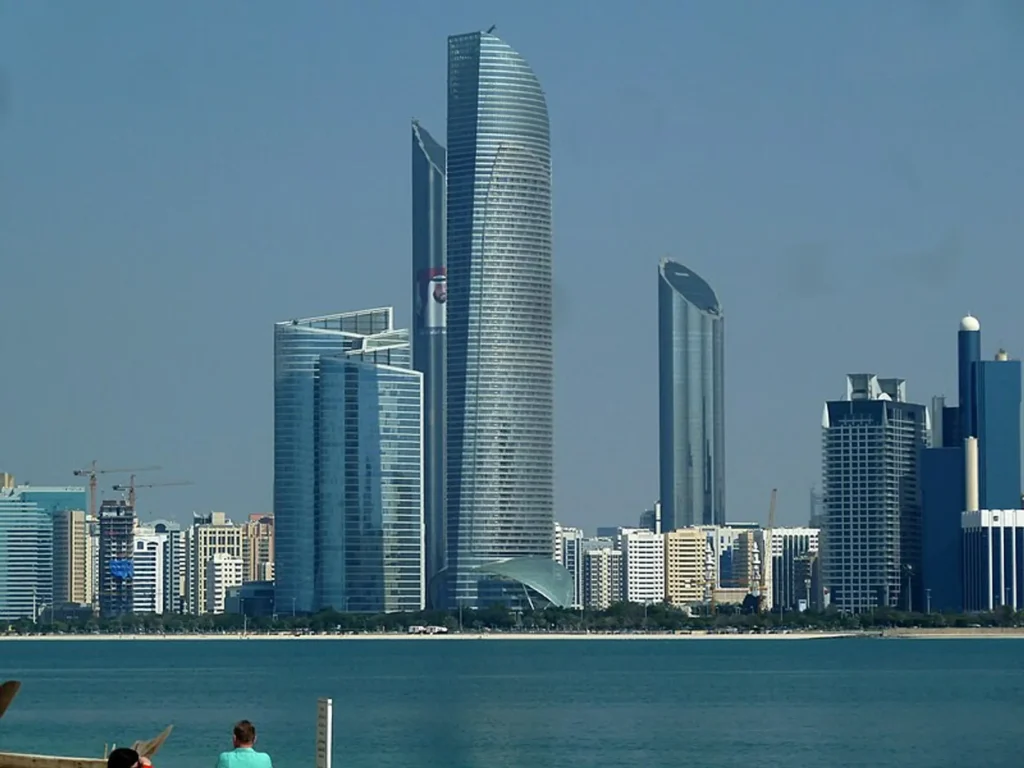Abu Dhabi, the capital of the UAE, is home to some of the world’s largest sovereign wealth funds, collectively managing over $1.7 trillion in assets. These immense funds—namely the Abu Dhabi Investment Authority (ADIA), Mubadala Investment Company, and the Abu Dhabi Investment Council (ADIC)—play a pivotal role not just in shaping the economic future of the UAE but also in influencing global markets. Their operations, however, are far from a unified front. While they collaborate in several high-profile projects, they also engage in intense competition, each vying for dominance in various sectors. But how exactly do these funds collaborate, and where do they find themselves at odds?
The Scope and Power of Abu Dhabi’s Sovereign Wealth Funds
The sheer scale of Abu Dhabi’s wealth is staggering. With assets estimated to be over $1.7 trillion, these funds have the financial muscle to make game-changing investments. ADIA, one of the oldest sovereign wealth funds in the world, holds a portfolio spanning various asset classes, including equities, fixed income, and alternative investments. Mubadala, on the other hand, has a broader mandate, focusing on investments that also foster innovation and contribute to the UAE’s long-term development.
At the heart of this wealth is Abu Dhabi’s oil-rich economy, which has enabled the emirate to amass significant resources. However, as the UAE transitions away from its reliance on oil, these funds are now investing heavily in technology, renewable energy, and healthcare, positioning themselves for a future-proof strategy. Their investments span multiple continents, with holdings in global powerhouses like Tesla, Amazon, and Intel.

Collaborative Endeavors: A Unified Vision

Despite their independent goals, these funds often collaborate to spearhead large-scale projects that align with Abu Dhabi’s economic diversification strategies. The collaboration between Mubadala and ADIA in the healthcare sector is one such example. Together, they have invested heavily in healthcare innovation, partnering with firms like Gilead Sciences to expand access to life-saving treatments globally. This shared vision for the future of healthcare has led to significant advancements in both medical research and patient care.
Furthermore, the funds work together in major infrastructure and energy projects. In 2019, they jointly invested in a $1 billion solar power initiative in Egypt, underscoring their commitment to renewable energy solutions. These projects not only benefit the UAE economically but also enhance its geopolitical influence, making it a global leader in sustainable development.
Such collaborations extend beyond financial investment, as these funds also pool their resources and knowledge to shape the future of the region. They are working hand in hand to support the UAE’s Vision 2030, which aims to transform the country into a global hub for innovation, technology, and sustainability.
Competitive Edge: Where They Draw Lines
Despite their collaborations, these funds are also fierce competitors. Each fund has its own strategic priorities, leading to differences in the types of investments they pursue. ADIA, for example, focuses primarily on traditional asset classes like public equities and bonds. Its strategy is conservative, ensuring stability and long-term growth for its portfolio. Mubadala, by contrast, is more aggressive, focusing on venture capital and alternative investments in sectors like artificial intelligence, biotechnology, and renewable energy.
This competitive landscape often manifests in the funds’ dealings in the same sectors. Take the burgeoning tech industry, for example. While both ADIA and Mubadala have stakes in technology companies, their approach is markedly different. ADIA tends to invest in large, established companies with stable returns, whereas Mubadala seeks high-risk, high-reward opportunities, often taking equity stakes in startups and emerging technologies.
This divergence in strategy leads to some tension, particularly in industries where both funds are active. For instance, both ADIA and Mubadala have made significant investments in the global renewable energy sector, but each fund has chosen its own path. Mubadala’s more dynamic approach has led it to take larger stakes in companies like First Solar, while ADIA has focused on more passive investments in established players in the sector.
Fostering Innovation Through Competition
This competition, however, is not necessarily detrimental. On the contrary, it spurs innovation and ensures that Abu Dhabi’s sovereign wealth funds are always at the cutting edge of global investment trends. By competing in high-growth sectors like tech and renewable energy, they drive each other to innovate, offering solutions that not only benefit the UAE but also the world at large.

The competition between these funds also reflects the broader global dynamics at play. In a world where financial markets are becoming increasingly complex and interconnected, the ability to adapt and innovate is crucial. By maintaining a competitive edge, these funds can continue to thrive, contributing to Abu Dhabi’s long-term economic goals while also driving the UAE’s diversification efforts.
A Vision for the Future: Synergy Amidst Rivalry
Looking ahead, it’s clear that the relationship between these funds will continue to evolve. As the UAE transitions from an oil-dependent economy to one driven by technology, renewable energy, and sustainable development, the funds will increasingly find themselves working together on shared goals. However, this cooperation will not come at the cost of competition. Each fund will continue to carve out its own niche, ensuring that Abu Dhabi remains a global powerhouse in both finance and innovation.
In conclusion, the $1.7 trillion managed by Abu Dhabi’s sovereign wealth funds is not just a symbol of immense financial power, but also of the emirate’s strategic foresight. Through collaboration and competition, these funds are shaping the future not just of the UAE, but of global markets. Their collective and individual actions will continue to influence the course of the economy for decades to come, ensuring that Abu Dhabi remains a key player on the world stage.
Read More: Abu Dhabi’s G42 Eyes Bold US Expansion Amid UAE’s AI Surge













